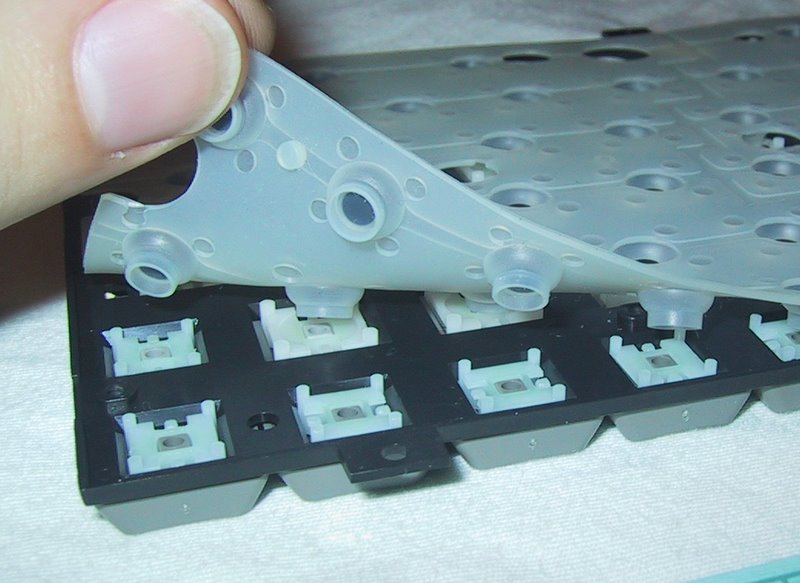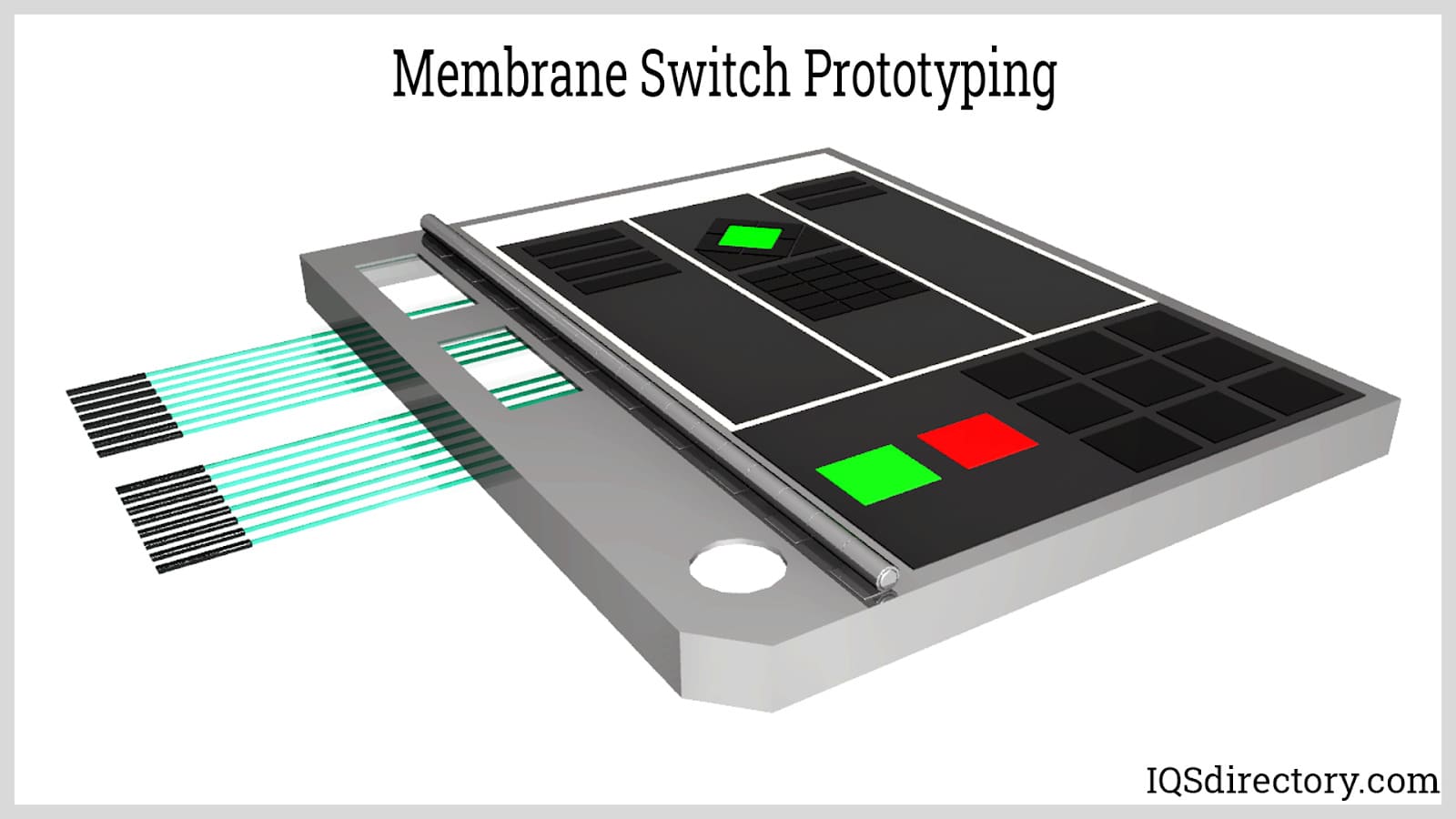Product testing is a top consideration when selecting a membrane switch manufacturer for interfaces.
Product testing is a top consideration when selecting a membrane switch manufacturer for interfaces.
Blog Article
Everything About Membrane Layer Switch: Recognizing Its Style and Functionality
When you think about the control interfaces in modern tools, membrane layer buttons frequently come to mind. Let's explore what collections membrane layer changes apart from various other control systems.
What Are Membrane Layer Buttons?

Their seamless nature makes them very easy to tidy and resistant to dust and wetness, a vital feature in lots of environments. Membrane switches can likewise be personalized concerning shape, dimension, and graphics, permitting makers to develop one-of-a-kind user interfaces customized to specific products. Plus, they're lightweight and slim, which aids in lessening the general mass of devices. Generally, membrane buttons play a significant duty in boosting user experience throughout a wide range of applications.
Just How Membrane Layer Switches Job
When you press a secret on a membrane button, it triggers a simple yet effective device. The leading layer, often made of versatile product, presses down onto a conductive layer below it. This action bridges the space between conductive traces, finishing an electrical circuit. As quickly as the circuit closes, it sends a signal to the gadget's controller, which translates your input.
You'll discover that the tactile comments varies based on the button layout, using either a soft click or an extra obvious action. As soon as you launch the key, the membrane returns to its initial setting, resuming the circuit and stopping the signal. This process takes place nearly instantaneously, ensuring a receptive customer experience.
Membrane layer buttons are popular as a result of their toughness and resistance to dust and wetness, making them ideal for different applications, from home home appliances to clinical tools. Recognizing this procedure helps you appreciate their widespread usage.
Trick Elements of Membrane Layer Buttons
Understanding the essential components of membrane layer switches is fundamental for understanding their capability and design. The protective layer shields versus ecological variables and wear, prolonging the button's lifespan. By understanding these components, you'll get insight right into just how membrane switches run and their value in different applications.
Materials Used in Membrane Layer Switch Over Layout
The performance and resilience of membrane layer switches heavily depend on the products utilized in their style. You generally encounter polyester and polycarbonate as primary substrates because of their exceptional strength and versatility. These materials resist scratches and chemicals, making them excellent for requiring environments.
The conductive layers often utilize silver or carbon, chosen for their reliability and conductivity. membrane switch manufacturer. Silver offers remarkable performance, while carbon is an economical choice. For the overlay, you may think about a matte or glossy coating, depending on your aesthetic demands and customer experience
Make particular to select adhesives that stand up to environmental elements like temperature level and humidity. Selecting the ideal products will certainly guarantee your membrane layer switch stands the examination of time.
Style Factors To Consider for Membrane Layer Buttons
While developing membrane switches, it's crucial to consider various variables that influence their capability and customer experience. Beginning by focusing on the layout and switch dimension; make particular they're user-friendly look at more info and very easy to navigate. Take into consideration the responsive comments you wish to provide-- will individuals need a visible click or a softer touch? Furthermore, consider the materials you'll make use of, as they'll influence resilience and appearances.
Confirm your layout suits ecological factors, like wetness or temperature level variations, which might influence efficiency. By meticulously thinking about these elements, you'll create a More about the author membrane layer button that enhances use and contentment.
Applications of Membrane Layer Switches
Membrane layer buttons are flexible elements located in numerous applications, from industrial devices to consumer electronics. You'll see their impact in machines that call for resilient user interfaces and in devices that gain from sleek styles. Understanding these applications helps you value the functionality and usefulness of membrane layer buttons in everyday modern technology.
Industrial Tools Use
When you're looking to boost the performance of industrial tools, membrane layer switches offer a trusted service that incorporates longevity with straightforward style. These buttons are excellent for rough environments, offering resistance to dirt, dampness, and chemicals. Accept membrane switches to streamline your operations and improve total performance.
Consumer Electronics Assimilation
In the domain name of customer electronic devices, membrane layer buttons play an important role in enhancing customer interaction and tool capability. Membrane layer switches additionally guarantee resilience and resistance to dirt and moisture, extending the lifespan of your electronic devices. By selecting membrane layer switches, you improve not simply the functionality but also the design of your gadgets, making everyday communications smooth and enjoyable.
Benefits and Disadvantages of Membrane Layer Switches
While membrane layer buttons supply a variety of benefits, they additionally feature some disadvantages that you must take into consideration. One substantial benefit is their compact design, making them perfect for space-constrained applications. They're additionally economical, providing a long lasting option with a reduced production price. Furthermore, their smooth surface area is very easy to tidy, enhancing health in atmospheres like healthcare facilities.

However, there are disadvantages. Membrane buttons can have a much this article shorter life expectancy compared to mechanical switches, especially under hefty use. They can likewise be less responsive, which could affect customer responses throughout operation. If damaged, fixing them can be difficult and typically calls for total replacement. Inevitably, their sensitivity to severe temperature levels and ecological conditions may restrict their effectiveness in certain setups. Balancing these benefits and drawbacks will assist you figure out if membrane buttons are the best fit for your project.
Frequently Asked Questions
The Length Of Time Do Membrane Layer Changes Usually Last?
Membrane layer switches over commonly last in between 5 to 10 years, depending upon use and ecological problems. You'll desire to examine variables like wear, direct exposure to moisture, and temperature fluctuations to evaluate their durability effectively.
Can Membrane Switches Be Customized for Details Layouts?
Yes, you can tailor membrane buttons to fit details designs (membrane switch manufacturer). You'll have the liberty to pick shades, forms, and designs that match your project's demands, ensuring they blend perfectly with your overall visual
What Is the Expense Array for Membrane Switch Over Production?
The cost range for membrane layer button production normally drops in between $1 and $10 per unit, depending on factors like style complexity, quantity, and products. You can obtain quotes from manufacturers to locate the best choice.

Are Membrane Layer Switches Water Resistant or Immune?
Membrane switches can be created to be water resistant or immune, depending on products used and building and construction techniques. If you require them for damp environments, assure you specify those requirements throughout the design process.
Just How Do Membrane Layer Changes Contrast to Conventional Switches?
Membrane buttons are usually thinner and a lot more adaptable than typical buttons, offering a streamlined layout. They're often simpler to clean and integrate, yet might not give the tactile responses you're made use of to with mechanical alternatives.
Final thought

Report this page